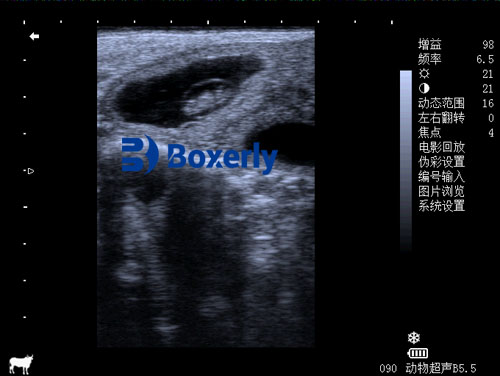Veterinary ultrasound is a powerful tool used to assess and diagnose various conditions in animals, from pets to livestock. The process involves using sound waves to create images of the internal organs and structures of animals, helping veterinarians detect abnormalities or confirm health conditions. However, a critical question arises: can veterinarians accurately interpret ultrasound scans? The answer lies in several factors, including the veterinarian’s experience, training, and the quality of the ultrasound equipment.

Understanding Ultrasound in Veterinary Practice
Ultrasound technology in veterinary medicine has evolved over the years, and it is now considered an indispensable diagnostic tool. It is used to examine a wide range of conditions, from pregnancy detection in livestock to identifying tumors or internal injuries in pets. Unlike x-rays or CT scans, ultrasound is a non-invasive and real-time imaging method, which makes it particularly useful in monitoring ongoing conditions, such as fetal development or the progression of an illness.
While ultrasound is an essential tool, its effectiveness largely depends on how well the operator can read and interpret the images it produces. This is where the skill and experience of the veterinarian come into play. Just like any other diagnostic tool, ultrasound requires a combination of technical expertise, knowledge of anatomy, and practical experience.
Factors That Influence Ultrasound Interpretation
-
Veterinarian’s Experience and Training
Experience is one of the most significant factors that determine whether a veterinarian can accurately interpret an ultrasound scan. A veterinarian who has worked extensively with ultrasound equipment will have developed a keen eye for identifying subtle abnormalities and interpreting the results accurately. Conversely, a less experienced veterinarian might struggle with distinguishing between normal variations and pathological findings.
Training in ultrasound techniques also plays a crucial role. Veterinarians need to be familiar with the proper handling of the ultrasound machine, how to position the animal, and how to optimize image quality for accurate diagnosis. This training often includes learning how to interpret specific images of organs and tissues, as well as how to recognize the typical appearance of healthy versus diseased structures.
-
Quality of the Ultrasound Equipment
Another critical factor is the quality of the ultrasound machine itself. High-quality ultrasound equipment with advanced imaging capabilities can produce clearer and more detailed images, which makes interpretation easier for the veterinarian. On the other hand, outdated or lower-quality machines may produce blurry or low-resolution images, which can make it more difficult for veterinarians to accurately assess the condition of the animal.
Additionally, the frequency of the ultrasound probe plays a role in the clarity of the images. Higher frequencies typically provide better resolution, especially for examining small structures like organs or tissues in small animals. However, lower frequencies are necessary for deeper imaging, such as in large animals or for visualizing deeper organs.
-
Animal Factors and Body Condition
The condition of the animal also impacts the accuracy of ultrasound interpretation. For example, an obese animal may have a thicker layer of fat, which can make it harder for ultrasound waves to penetrate and create clear images. In contrast, a lean animal may produce more accurate results due to less interference from body fat.
Additionally, the size and species of the animal can affect the quality of the ultrasound scan. Smaller animals, such as cats and dogs, tend to have more easily accessible organs, making it easier to capture high-resolution images. In contrast, large animals like cows or horses may require specialized equipment and techniques to obtain clear ultrasound images.

Challenges in Ultrasound Interpretation
Despite the advancements in ultrasound technology, interpreting the images is not always straightforward. One of the main challenges is the ability to differentiate between normal variations and pathological conditions. Some changes in tissue appearance may be indicative of a disease, while others may simply be natural variations within the animal’s body. In some cases, a veterinarian may need to conduct additional diagnostic tests or use ultrasound in conjunction with other imaging methods, such as x-rays or blood tests, to arrive at an accurate diagnosis.
Another challenge lies in the operator’s ability to detect subtle changes in the ultrasound images. Some abnormalities may be faint or difficult to distinguish from normal structures. Experienced veterinarians may be able to recognize these subtle differences and identify potential problems, but less experienced practitioners might miss these signs.
Improving Ultrasound Interpretation Skills
To enhance the accuracy of ultrasound readings, continuous education and practice are essential for veterinarians. Many veterinary professionals attend workshops, courses, and seminars to refine their skills and stay updated on the latest techniques and advancements in veterinary ultrasound. Additionally, some veterinarians may choose to specialize in ultrasound diagnostics, further honing their expertise.
Mentorship from more experienced colleagues also plays a vital role in improving ultrasound interpretation skills. Learning from others’ experiences, discussing challenging cases, and reviewing previous scans together can provide valuable insights and help build confidence in interpreting ultrasound results.

Conclusion
In conclusion, a veterinarian can indeed accurately read an ultrasound scan, but the level of accuracy depends on several factors. Experience, training, the quality of the ultrasound equipment, and the animal’s condition all contribute to the effectiveness of the diagnostic process. While challenges remain, continuous education and practice help veterinarians improve their ultrasound interpretation skills, ultimately leading to better patient outcomes. Veterinary ultrasound is an indispensable diagnostic tool, and with the right expertise, veterinarians can harness its full potential to provide precise diagnoses and improve animal health.
Sources:
-
“Veterinary Ultrasound: An Overview of Uses in Animal Practice” – https://www.veterinarypracticenews.com
-
“How Ultrasound Helps in Veterinary Diagnostics” – https://www.veterinaryemergencygroup.com/ultrasound